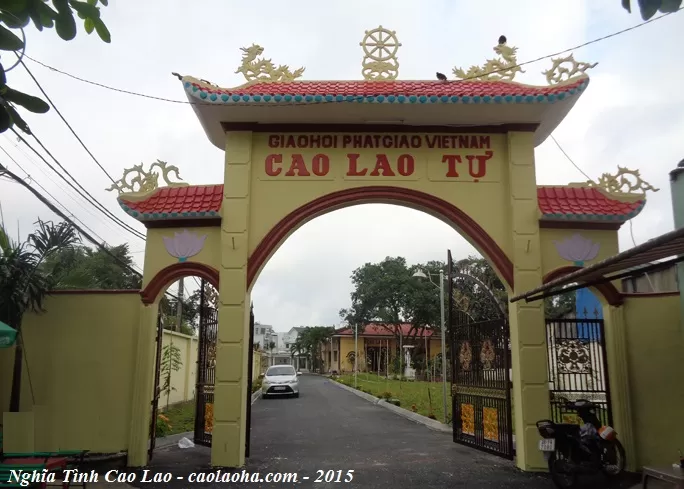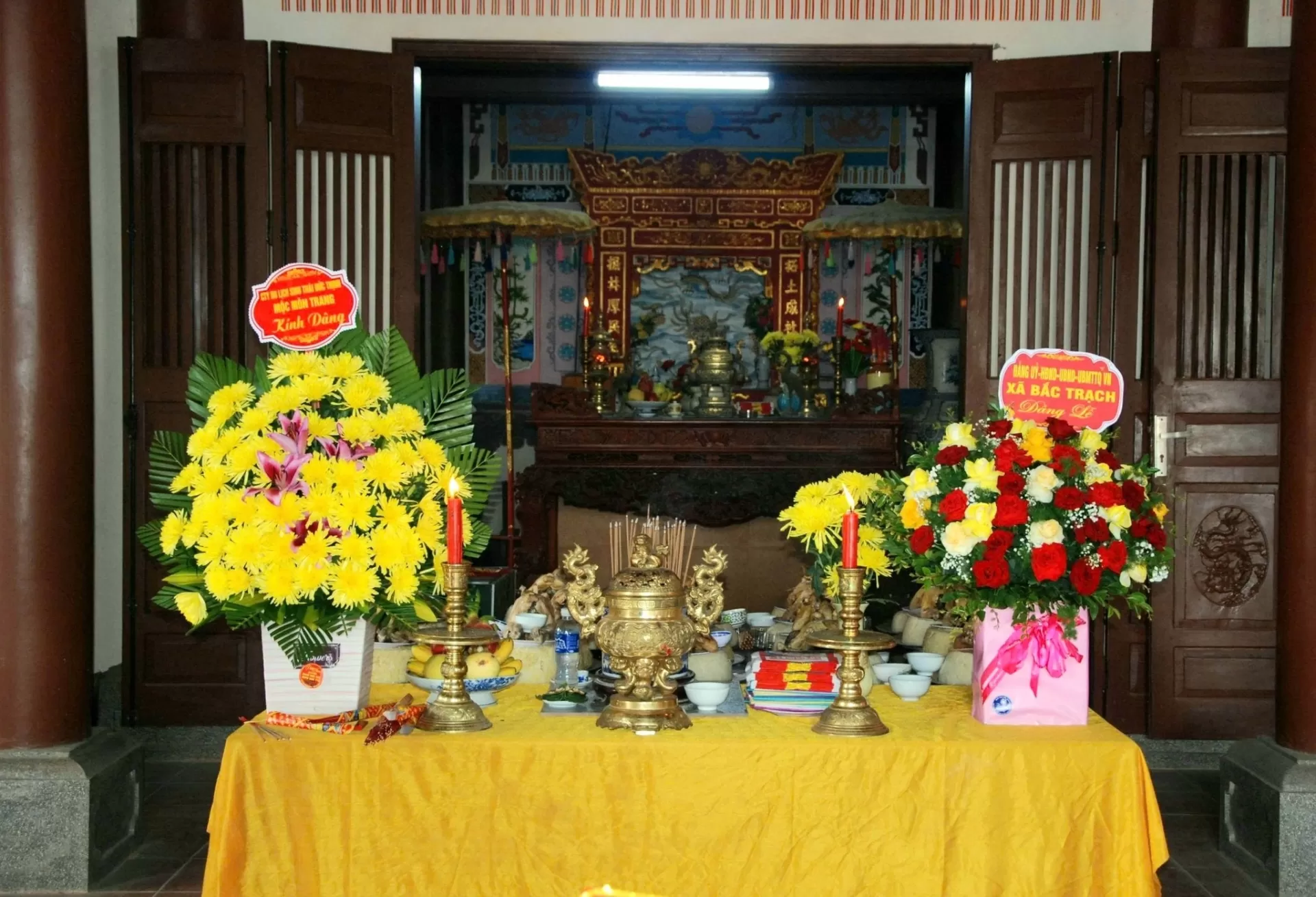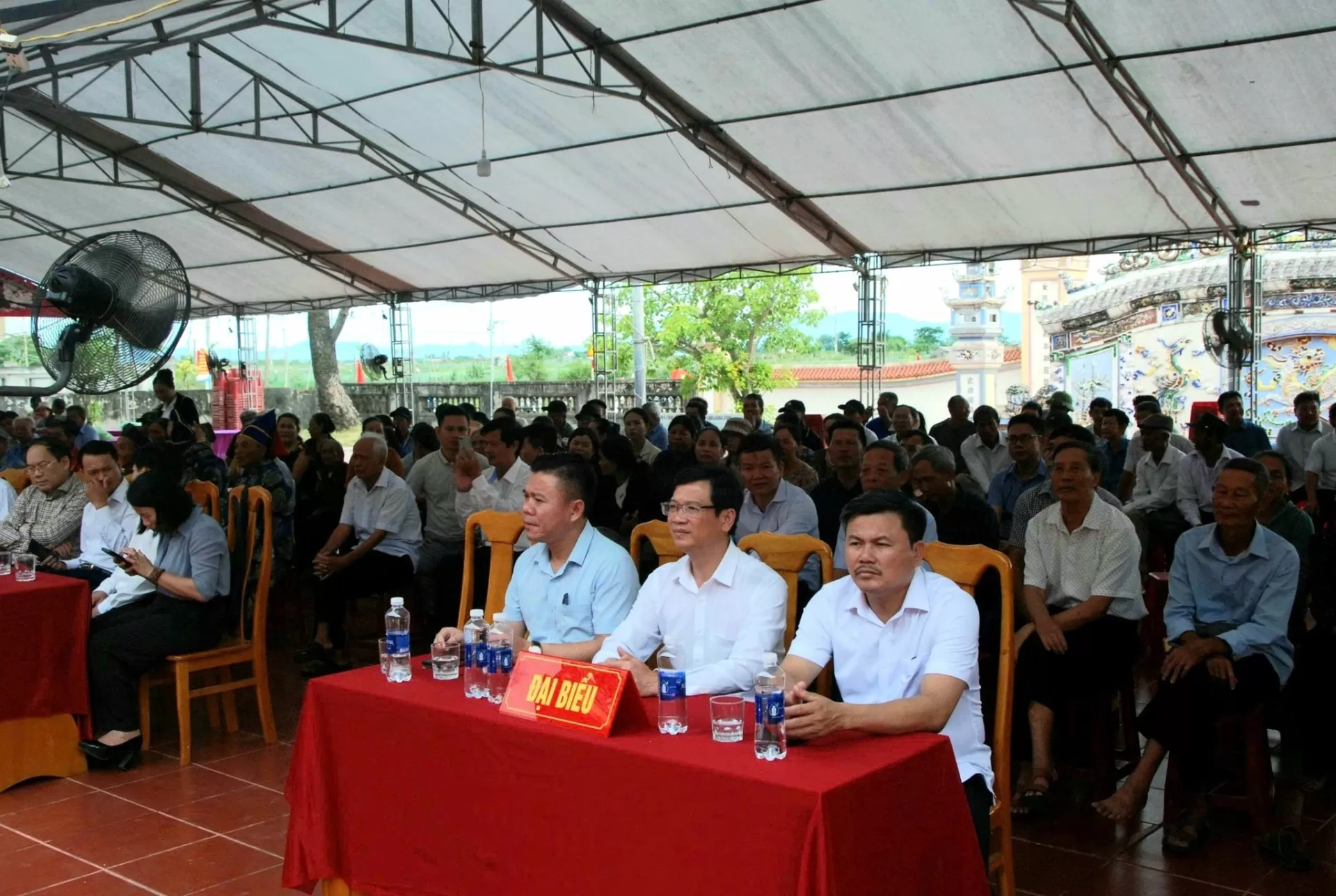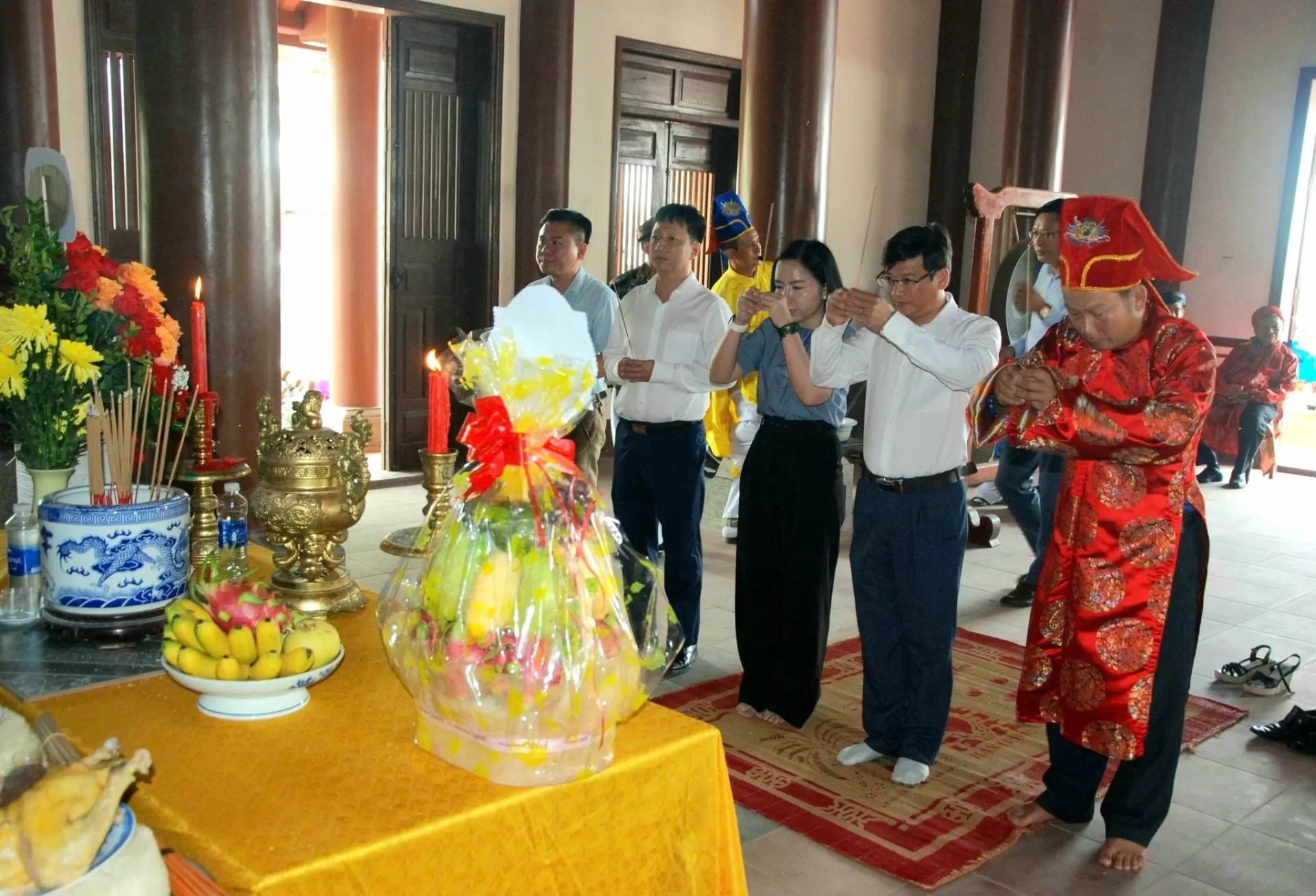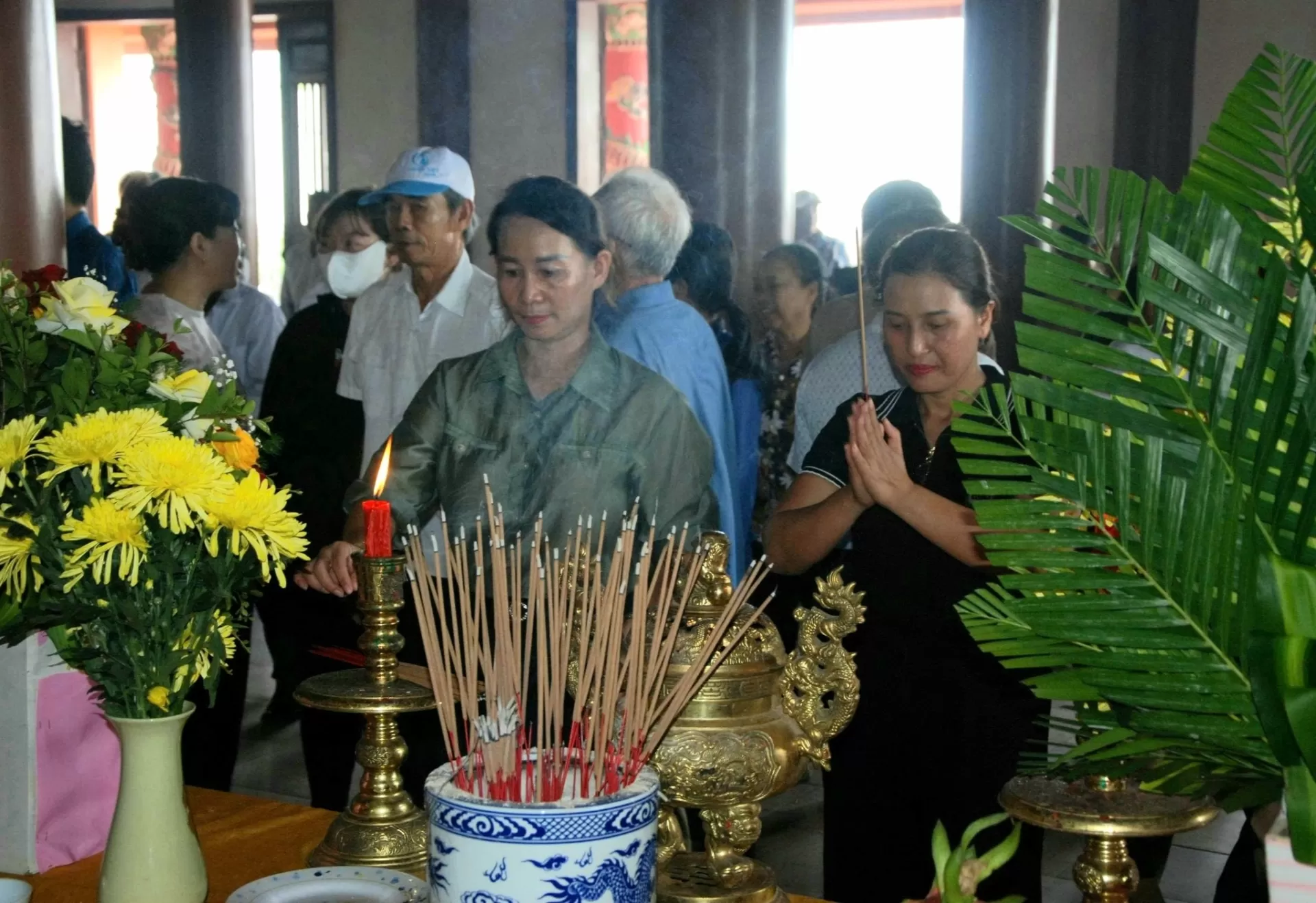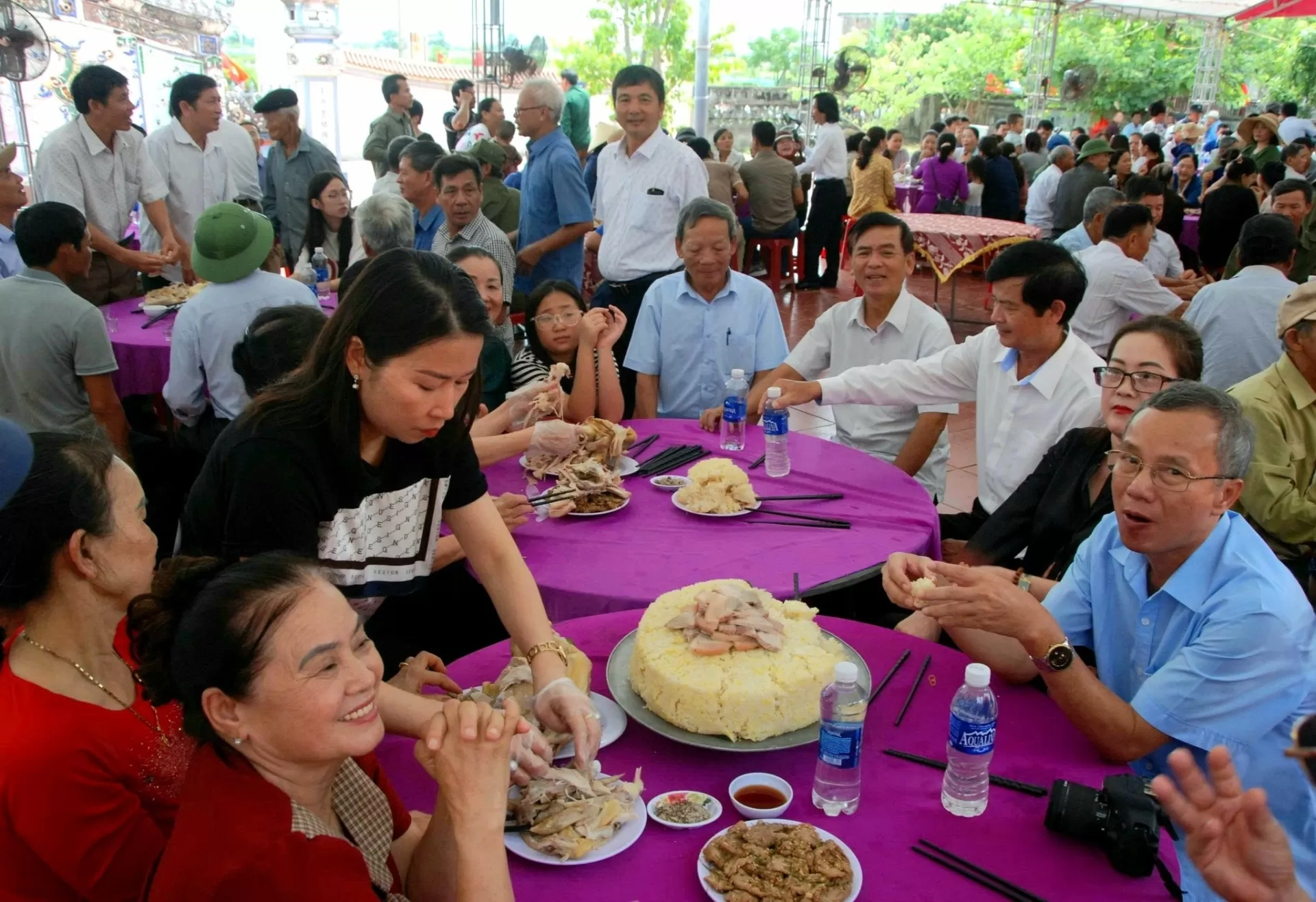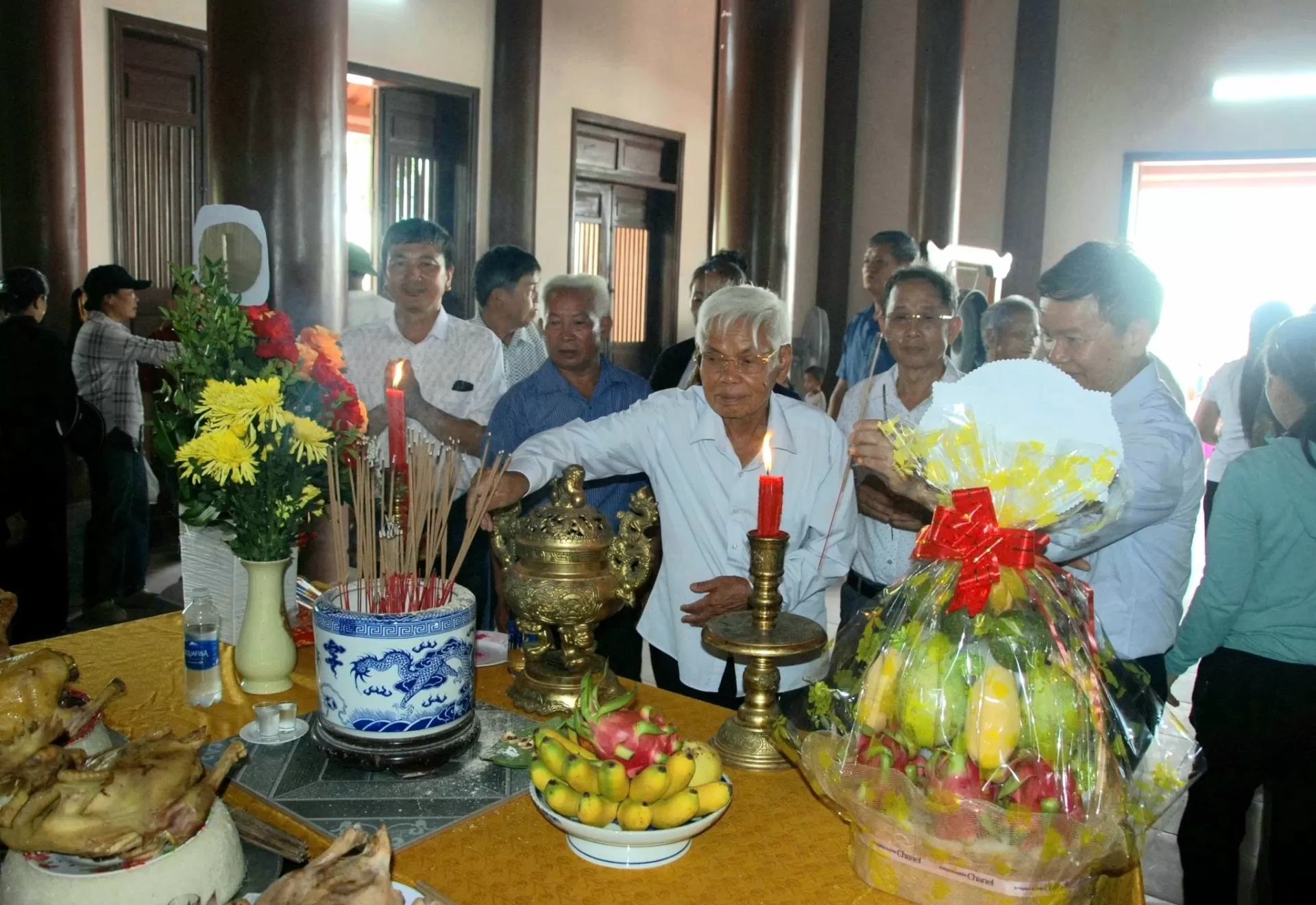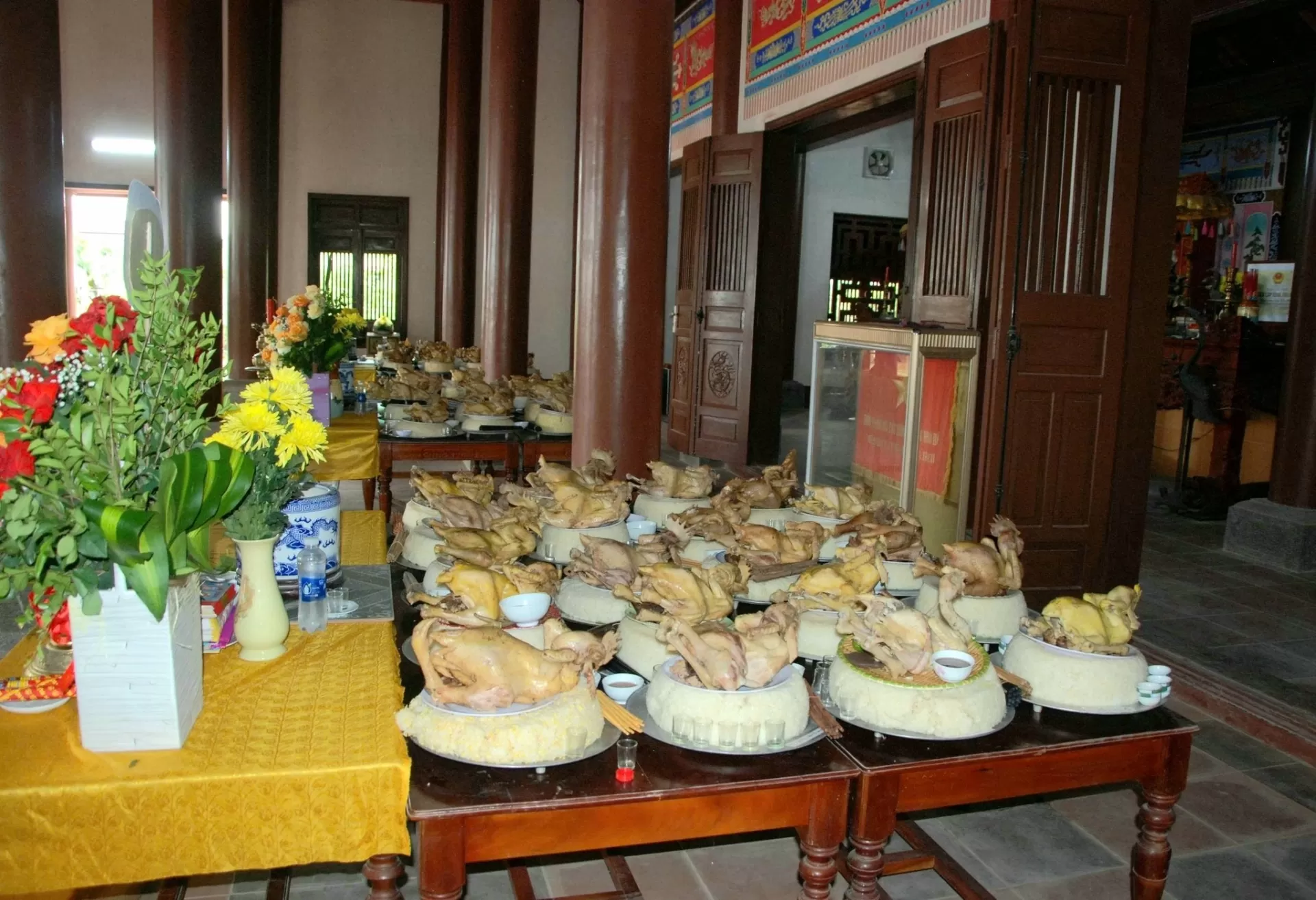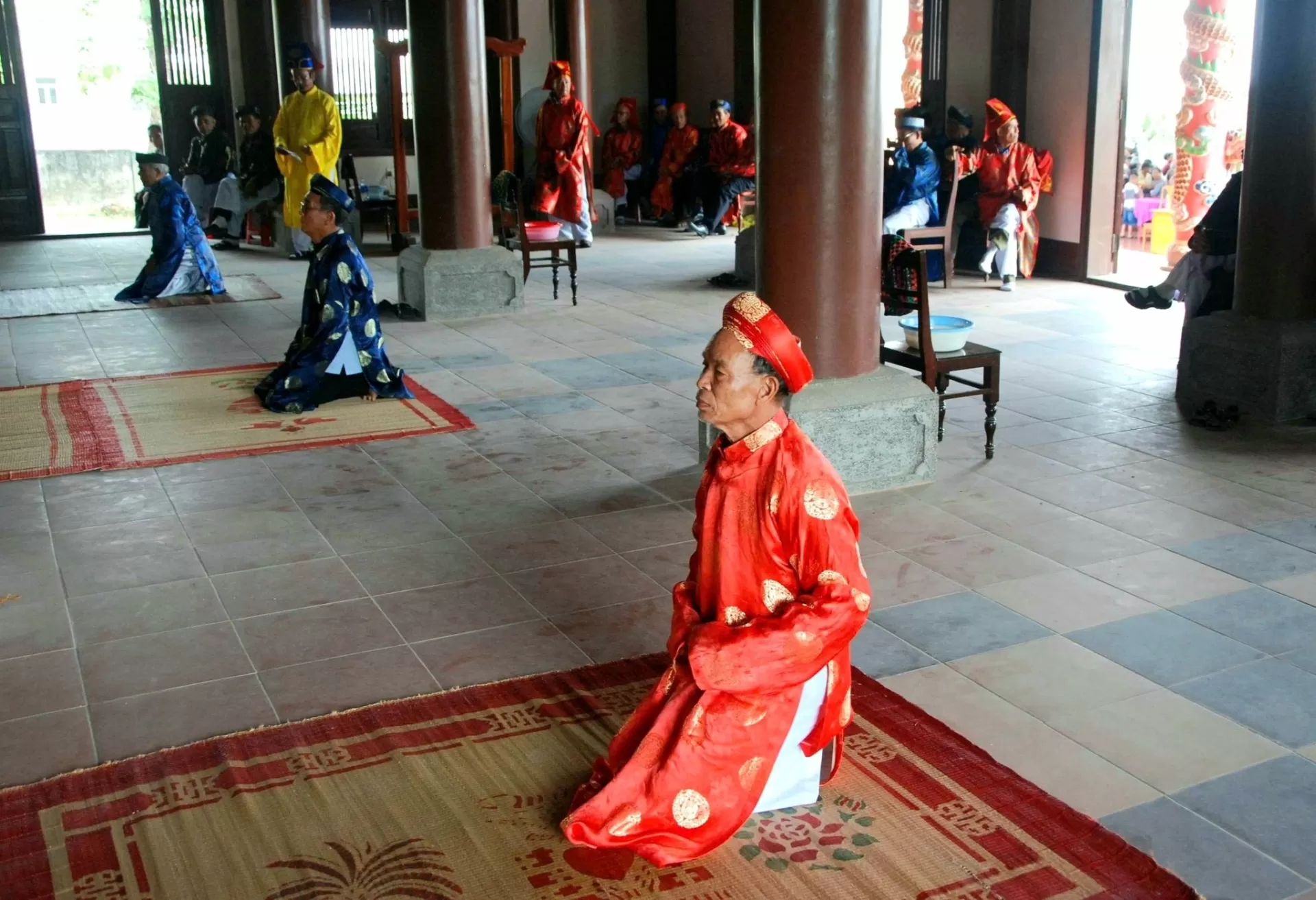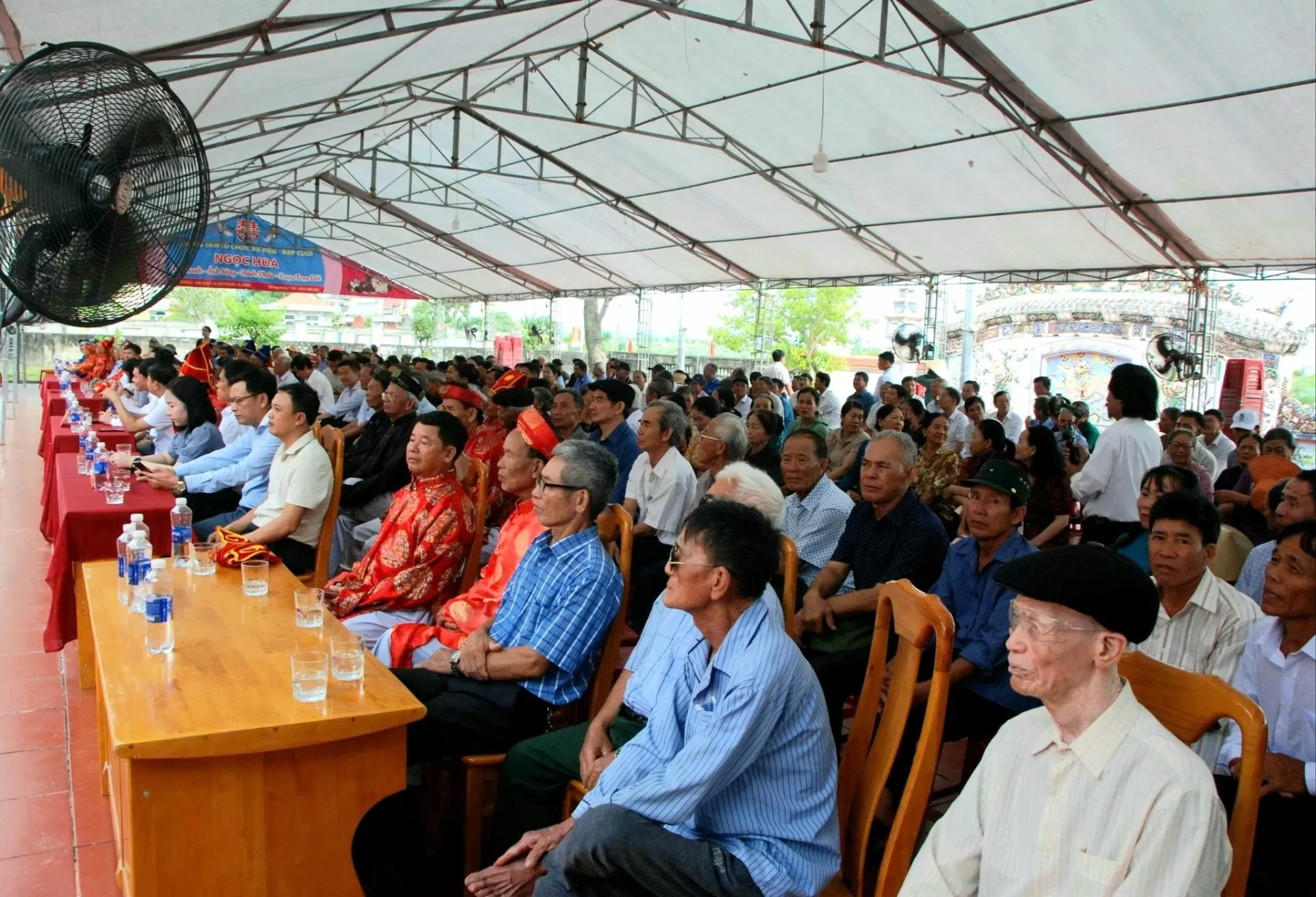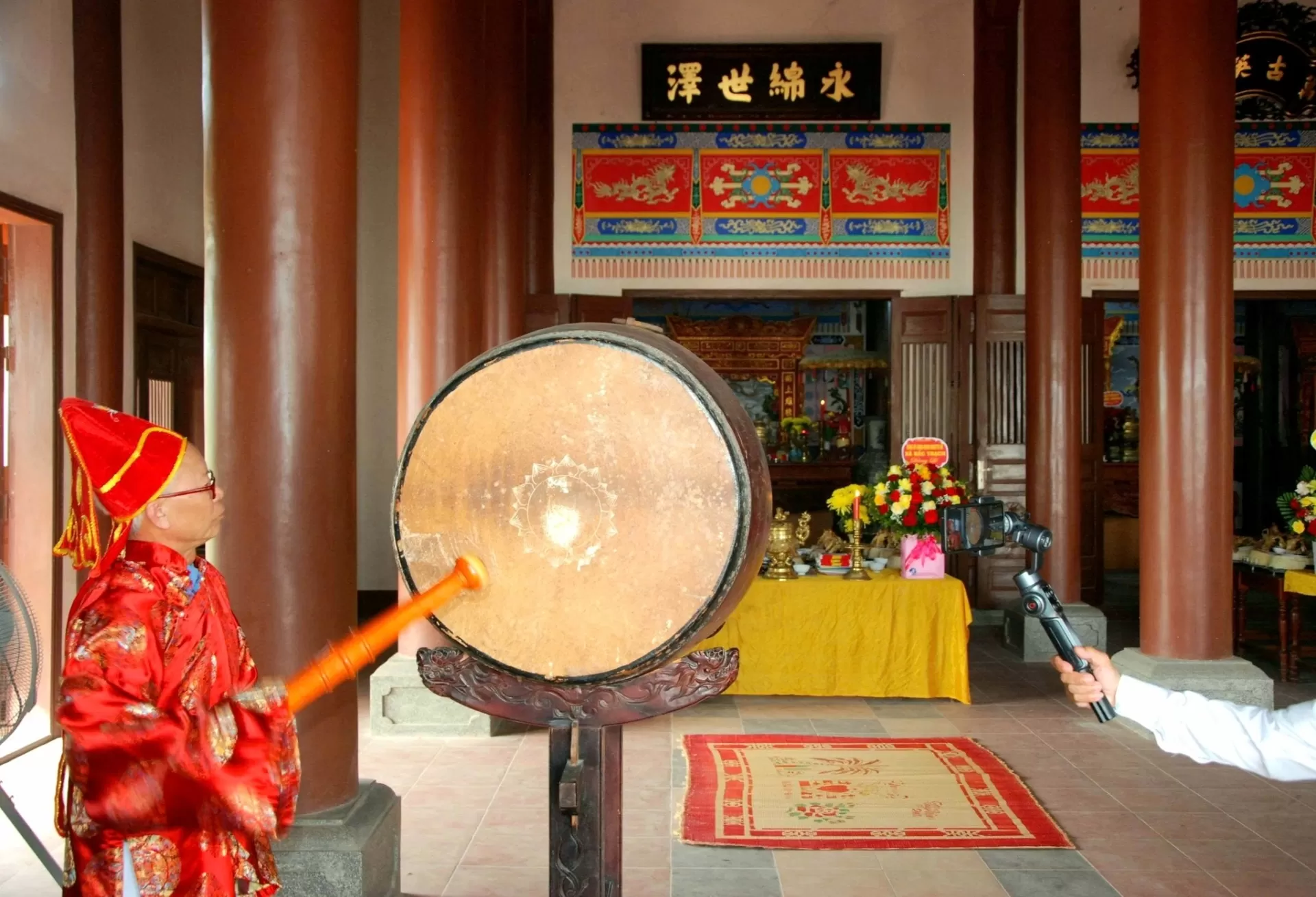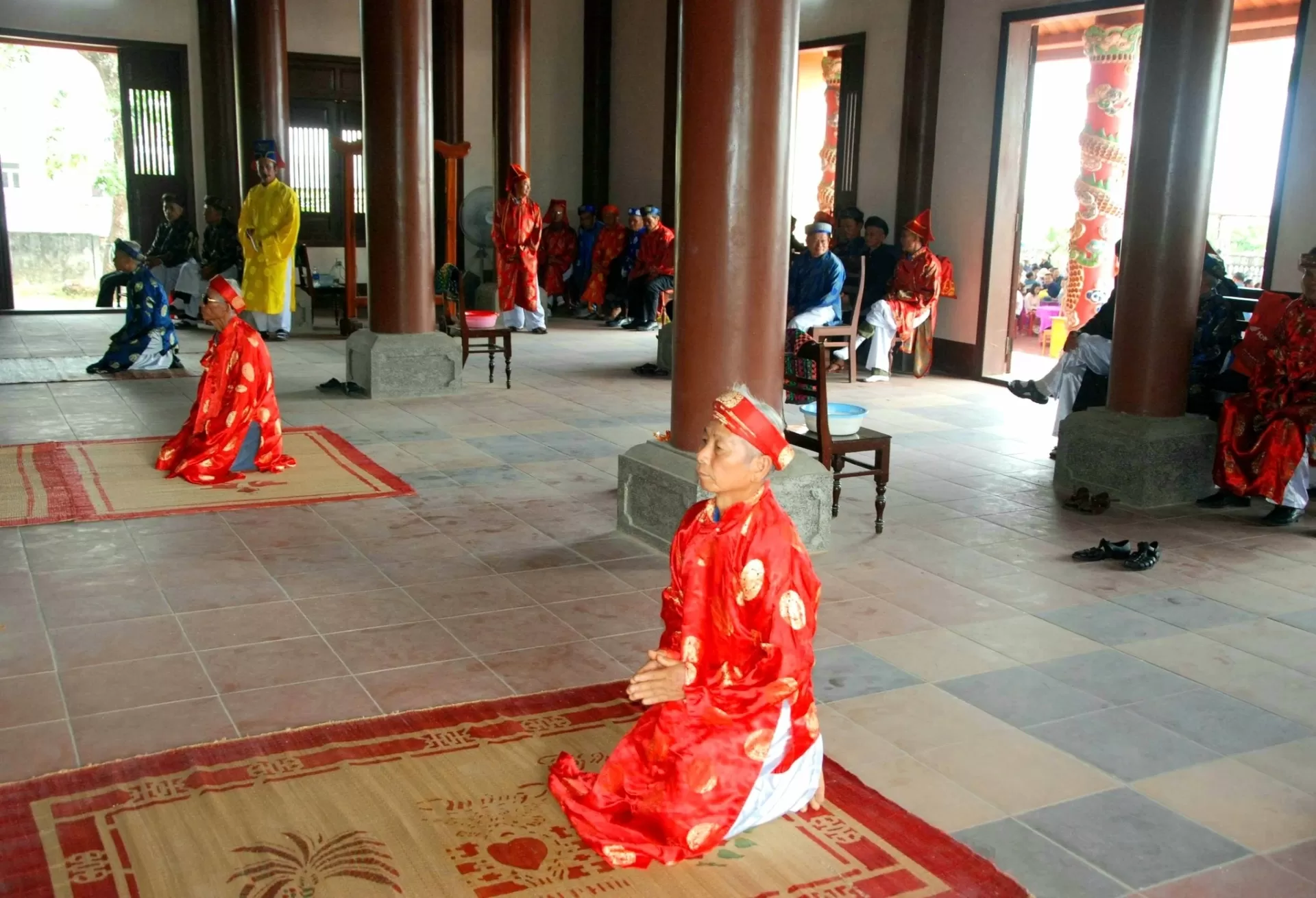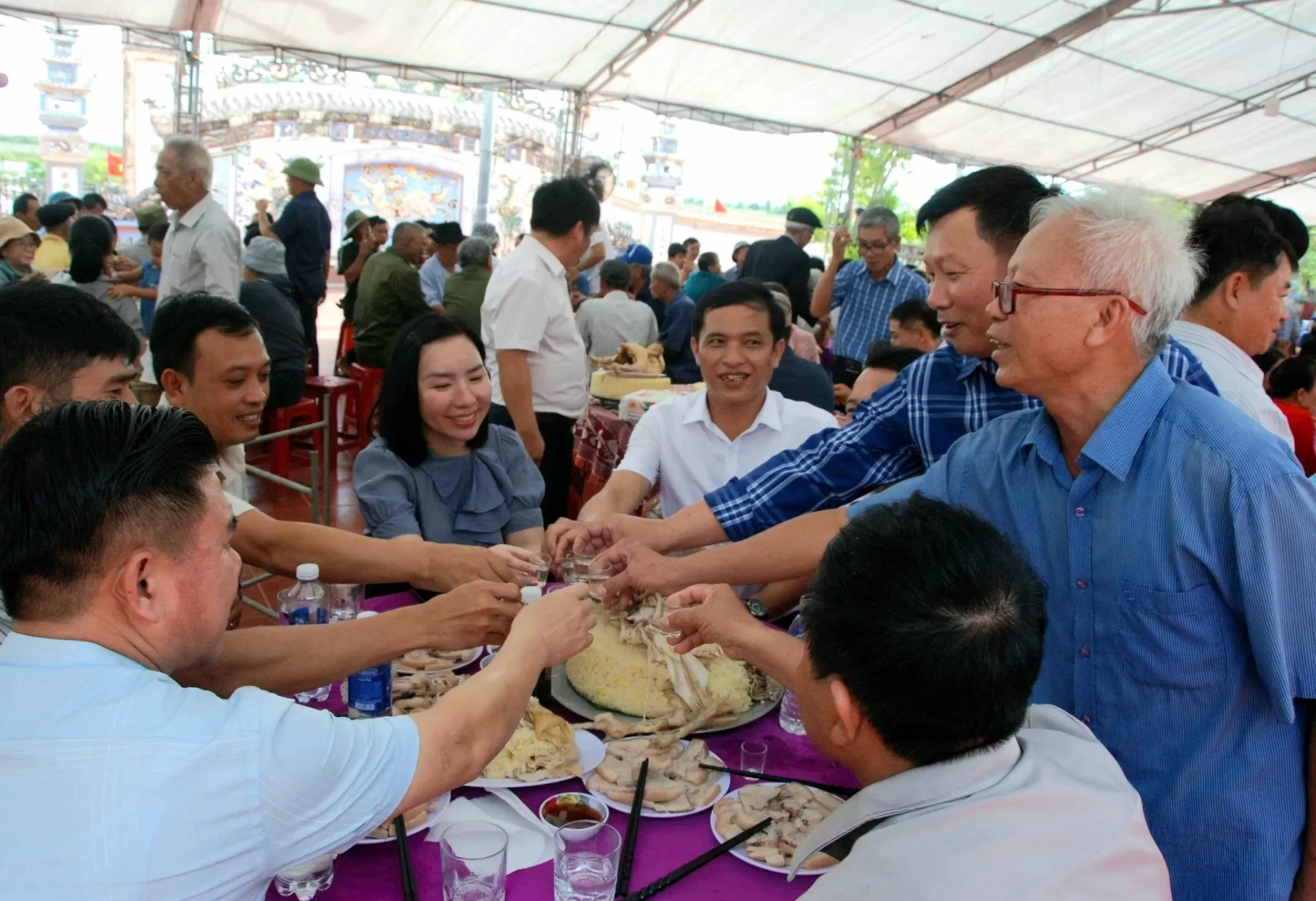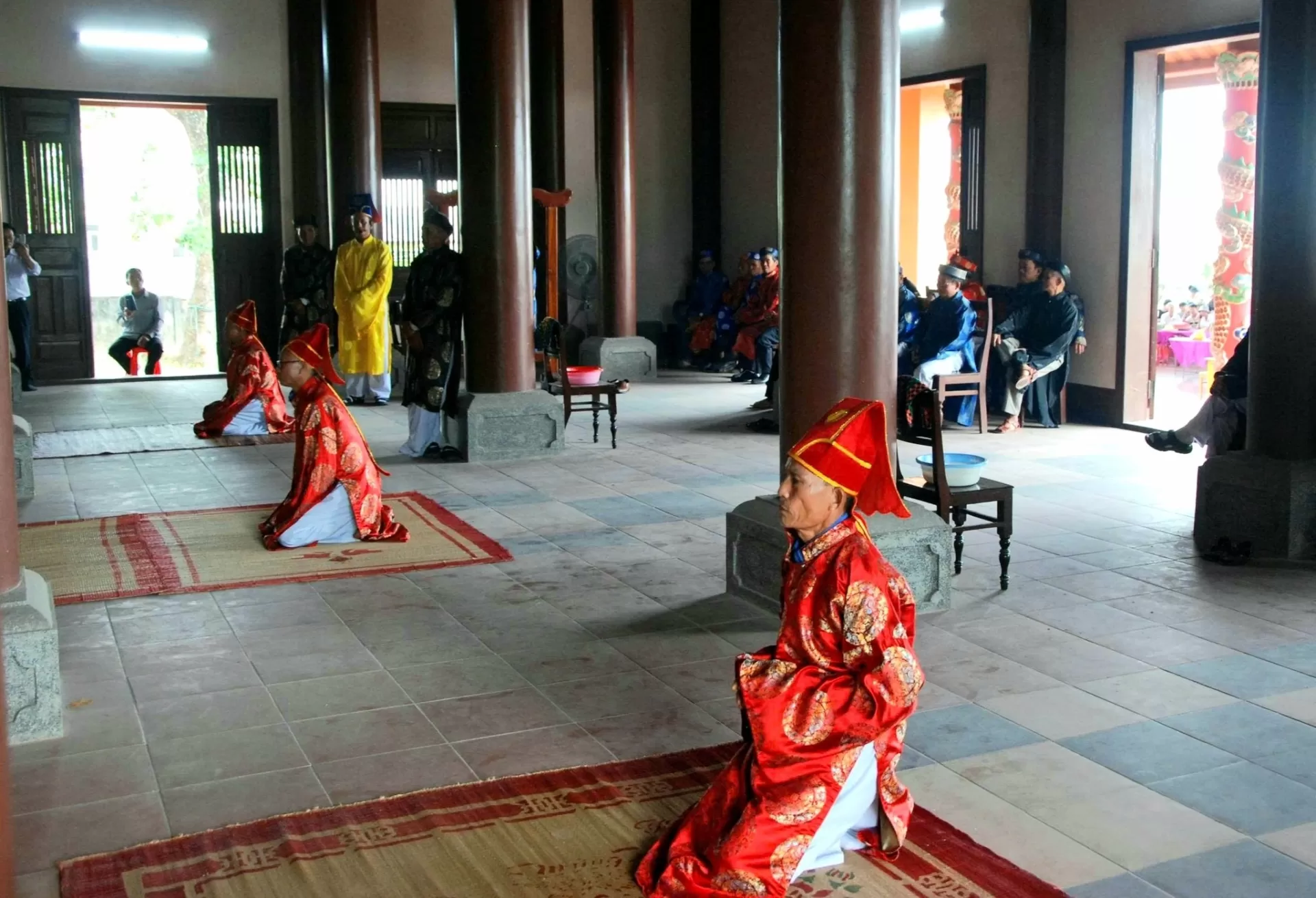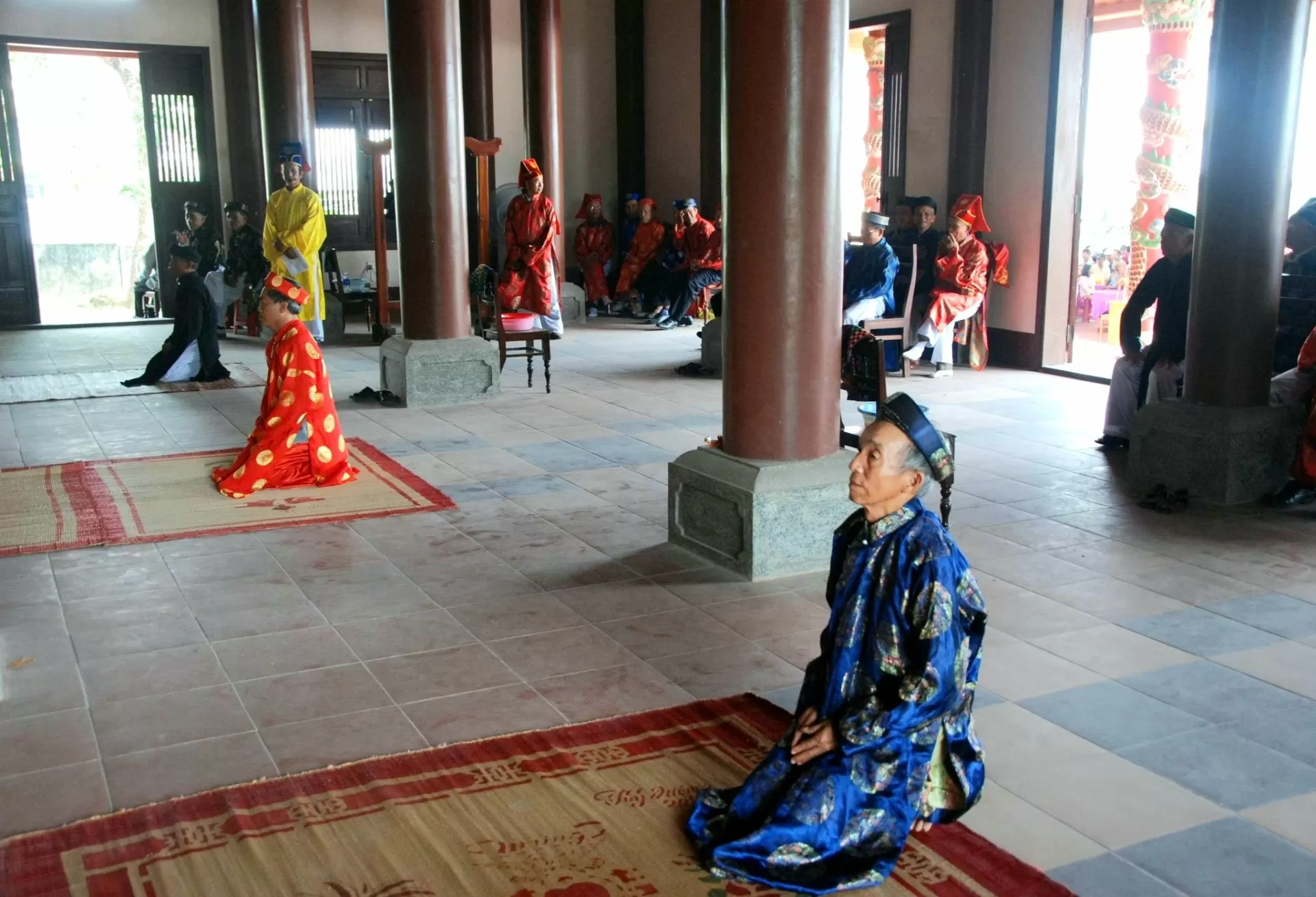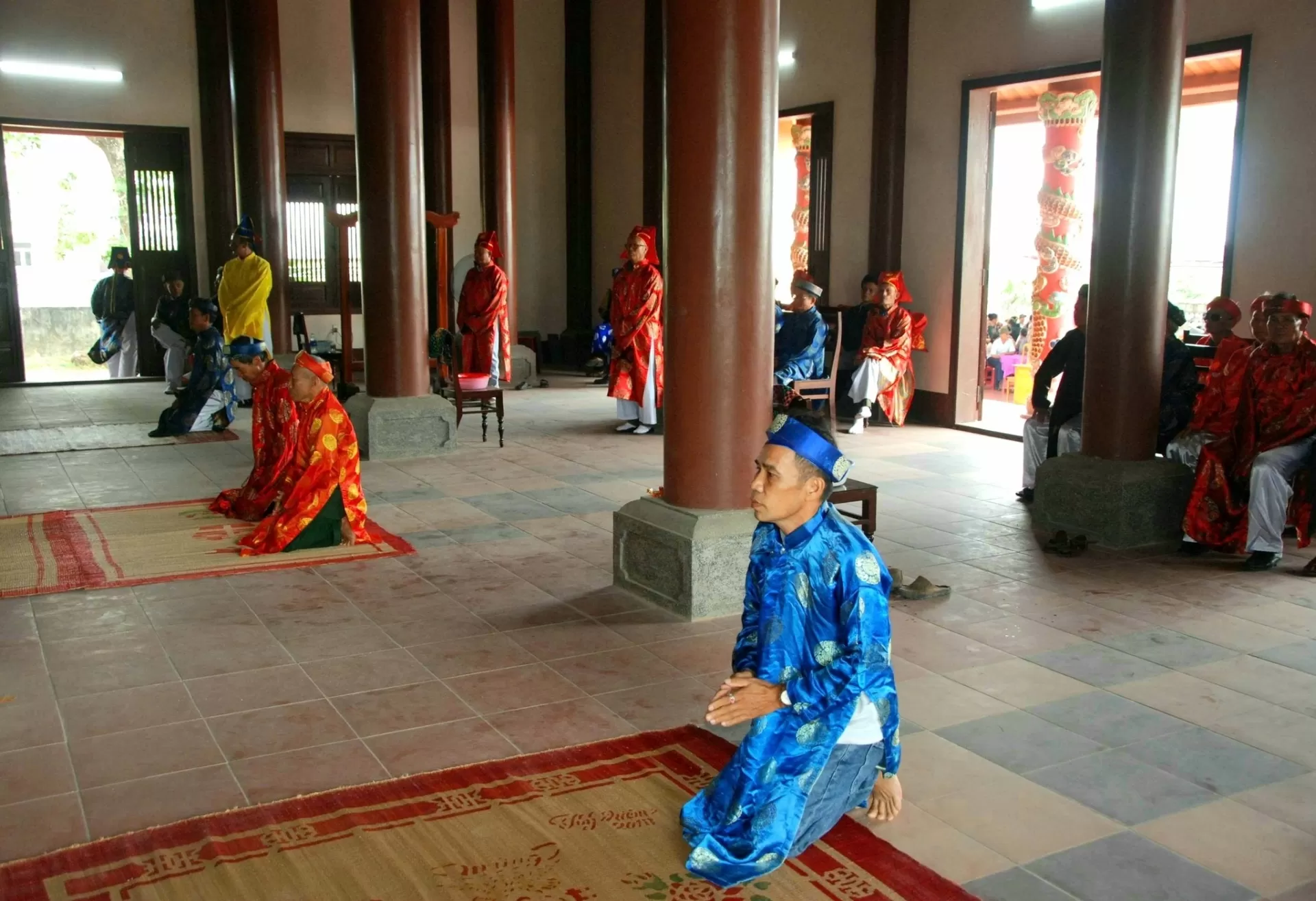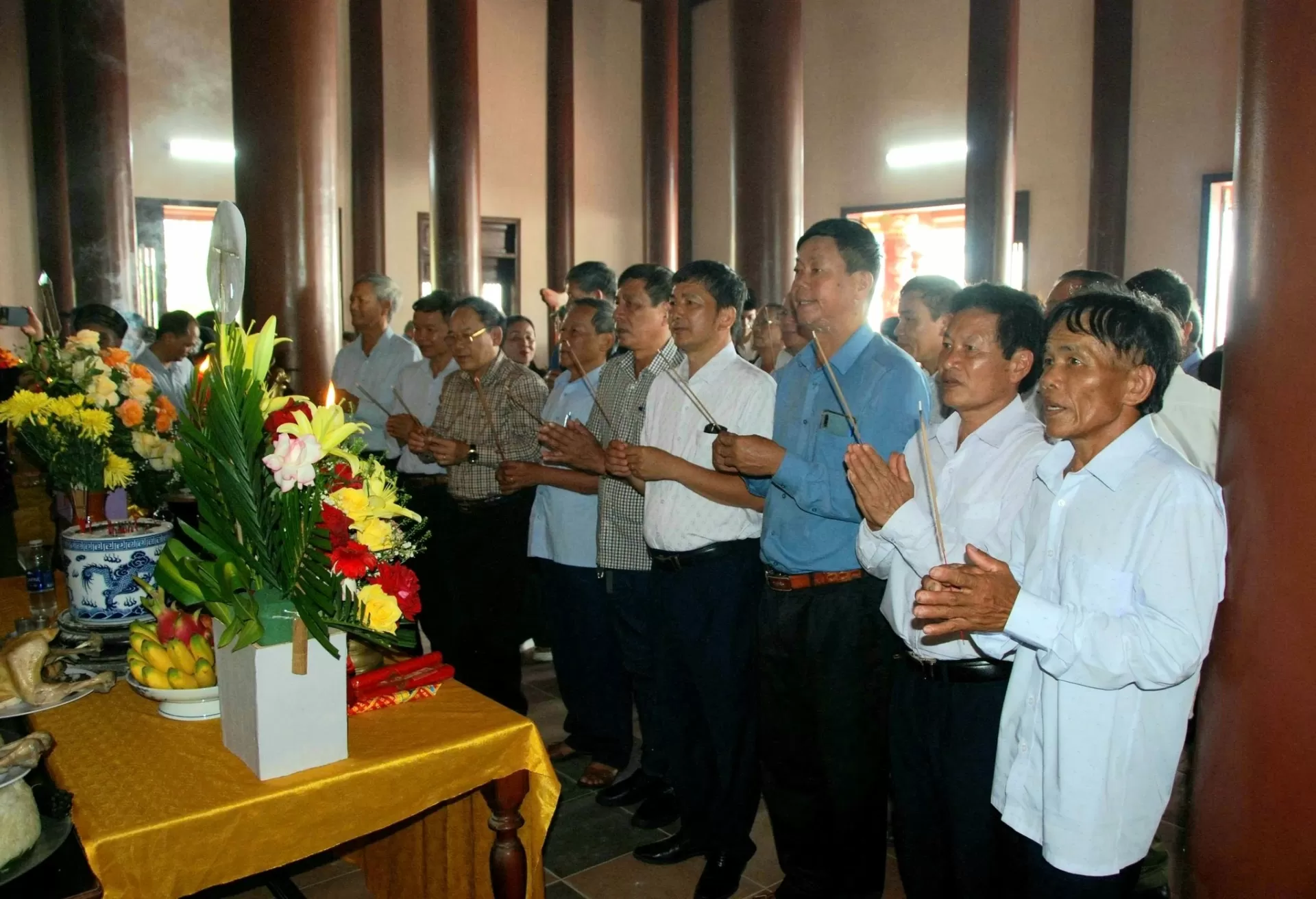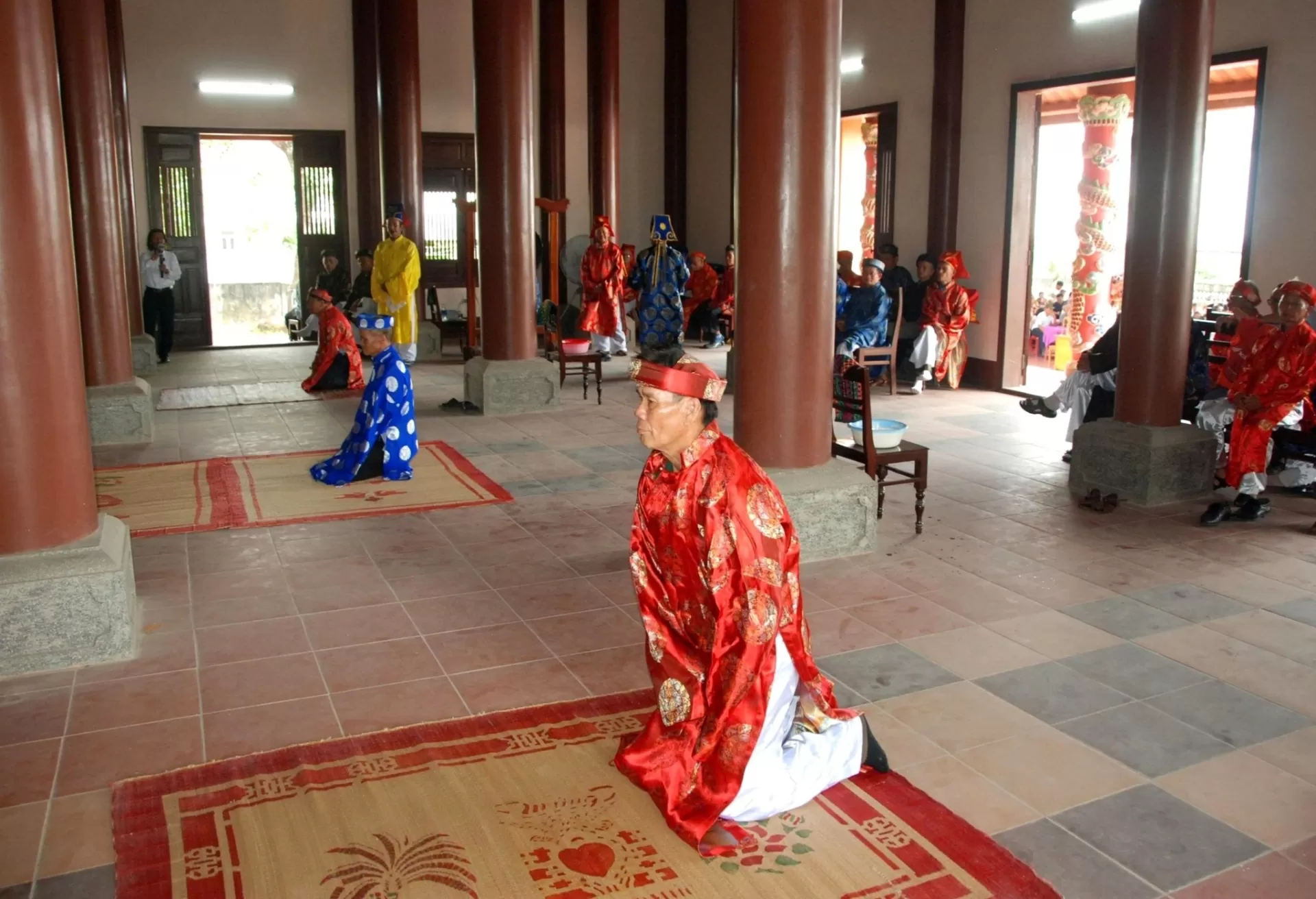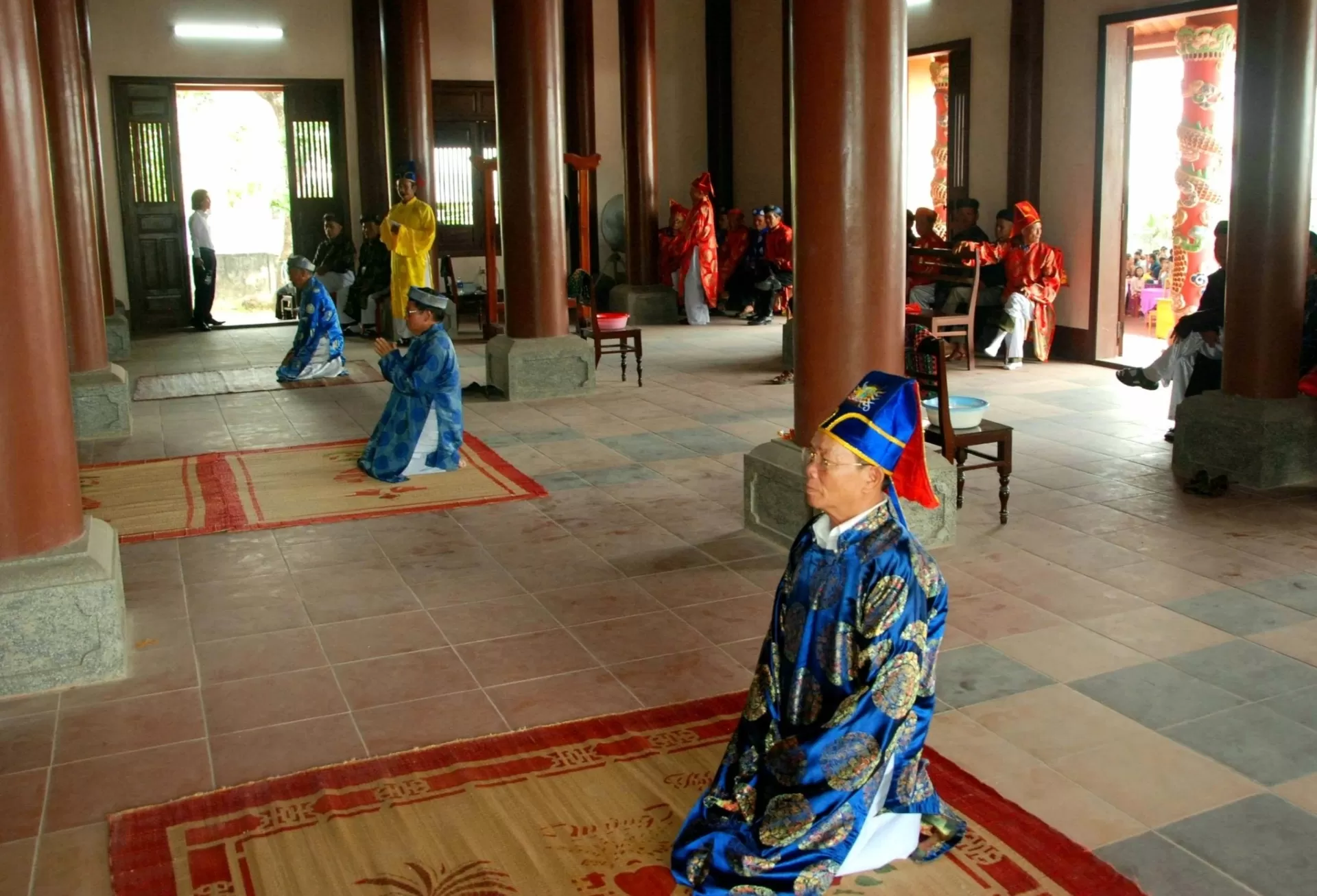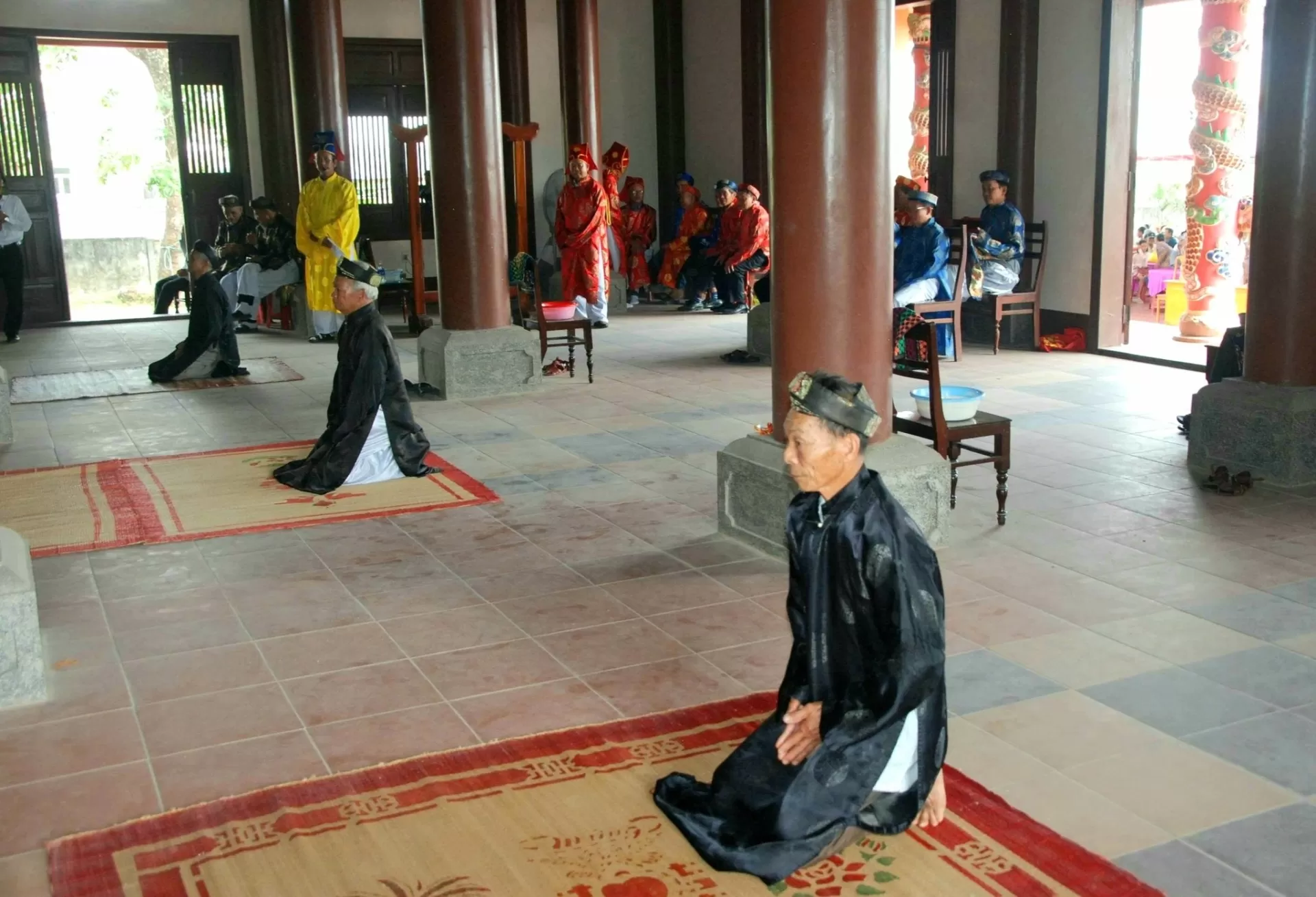According to annals of families in the region, ancestors of Cao Lao Hạ people migrated f-rom Thanh – Nghệ – Tĩnh to Quảng Bình (then called Bố Chính district) under the call for migration issued by King Lê Thánh Tông in 1470. So far, the oldest families have settled in Cao Lao Hạ for over 500 years, or approximately18-20 generations.
Cao Lao Hạ village (Hạ Trạch commune) is currently occupied by 24 families. It is worth noting that only two families Đặng and Phan have a unique surname; most other families in Cao Lao Hạ share the same surnames, although they are not consanguineous (ie. related by blood). For example, three families bear the common surname Lưu: Lưu Làng, Lưu Quan and Lưu Công; four families bear the common surname Lê: Lê Quang, Lê Chiêu, and two Lê Văn families; two families bear the surname Trần: Trần Văn and Trần Đăng; and 13 families bear the surname Nguyễn: Nguyễn Đăng, Nguyễn Phúc, Nguyễn Danh, Nguyễn Văn, Nguyễn Xuân, Nguyễn Khắc, Nguyễn Mạnh…
Most families have their own familial shrine built a long time ago. A few families who have yet to build a familial shrine conduct ceremonies and make offerings to their ancestors at the house of the family head (trưởng họ). During the wars, many family shrines were destroyed and deteriorated. After 1975, family members have began to rebuild and renovate their family’s shrine. All shrines are located in front of the village. The back of the shrines face the village; the front face the South direction, whe-re vast rice paddies and imposing mountains lie. The architecture of the shrines look like that of a small village temple (đình làng). A shrine is usually divided into three smaller sections, but the whole structure is pervaded by a common sacred and peaceful atmosphere. Each shrine is enclosed by brick walls and a gate that is intricately decorated. On the wall there are elaborate drawings of elephants and horses guarding the gate. The gate is formed with two large and solid pillars; two giant whales are carved on top of each pillar. On the surface of the gates is a couplet written with Nôm c-haracters. A screen is placed right behind the main gate. On the sides of the screen are two tropical almond trees (cây bàng) that shade the shrine courtyard f-rom sunlight. The shrine itself is built with bricks. During the wars the rooftop was used to be paved with “liệt” tile; now they are paved with “móc” tile. On the very top is a carved figure of “Lưỡng long triều nguyệt” (lit. A pair of dragons abiding by the Moon); the corners of the rooftops are curved.
All familial annals in Cao Lao Hạ are written with Nôm c-haracters. Families store their annals in a gold-plated box, placed on the central altar in the shrine. The annals are invaluable because they document the history of the family, f-rom the first ancestors to present-day descendants, each one with their own date of birth and death, their qualifications, their titles and their awards. The annals are an asset to the whole family; any family member, no matter how talented or brilliant in his times, cannot alone change or rewrite his family annals. It is often said that gold, money could be traded or given away but not the family annals.
Family annals could also be a valuable resource to study national history that have been generally overlooked by historians. In the annals there are many essays to guide and teach future generations. With the annals we can appreciate how much our ancestors care about educating succeeding generations. Also, in the annals there are specific instructions to the family heads on how to continue recording family events.
In Cao Lao Hạ village, customs concerning families are very rigorous and strictly followed. The family head is the highest authority within the family, regardless of his age. He is responsible to keep the annals, write, read them, and moving them. Reading and moving the annals are done during a ceremony which require the approval and the attendance of the family branch heads (trưởng chi); however, the family head is the only person who can request and conduct such ceremony, and he himself must take the annals f-rom their strored place on the family altar. When a family head becomes to old for his duties, often his son will replace him. If he does not have a son, family members will elect a new family head.
Different to many administrative units, families in Cao Lao Hạ have no “vice-family head”. As a result, when the family head is absent or for some reasons cannot carry out his duties, no one can take over, even temporarily. According to traditional customs, family head will represent the whole family in village meetings. Should village administration wish to make announcement to any individual villager, they must make it via the family head. If a family member violates law and has to go to court; the family head must also attend the hearings and sign all documents concerning the case. At the hearings the family head has two roles:
- Take responsibility (if needed) for his family member’s wrongdoing.
- Defend his family member if he believes the family member is innocent, or apologize to the village committee on behalf of the family member.
Family heads and village officials together supervise the practice of traditional customs. Family heads are knowledgeable and can communicate well; they represent family members in front of village officials. There is always a strong mutual respect between family heads and village officials.
Every year, on the occasions of Tết Nguyên Đán (Lunar New Year), Xuân Thu Nhị Kỳ (Middle of Spring and Autumn), Đương Khao (also called Xá tội vong nhân, which occurs in the middle of the seventh month in the lunar calendar), all families will make offerings to their ancestors. The offerings are well-prepared and often consist of sticky rice and meat. On the New Year occasion especially, family head and members gather in their family shrine to conduct tục yết ceremony in order to invite their ancestors back and join with the festivities. On the first day of the new year, families will make offerings in the form of bánh chưng. In the past, these ceremonies were sometimes performed in the family farm land, but nowadays families do not collectively own land anymore.
During ceremony days, the village is filled with a celebrative and solemn atmosphere of festivities. Men will dress in nice clothes and attend the ceremonies. The village paths are crowded with people; it is a great opportunity for villagers to build and further strengthen their relationships.
Each family has a group of people, led by the family head, who are in c-harge of preparing and conducting ceremonies worshipping the ancestors. On behalf of the whole family, the family head makes offerings to the ancestors in the middle section of the family shrine (family shrine is often divided into three sections). Heads of family branches will make offerings in the two side sections. In c-harge of the ceremony there are also two attendants (chấp lệnh), a senior (tiên chức) who reads the worshipping speech and pray on behalf of the family, and three ceremony assistants (lễ sinh) in c-harge of general preparations. The ceremony would then take place according to traditional customs. The smell of incense, the light f-rom candles and the panel saying “Kính thần, thần tại” (lit. Devote to deities as if they were present) all contribute to creating a solemn ambience during the ceremony.
After the ceremony, family members will gather in the shrine to have meals and recount proud stories of their ancestors. Family head and elderly family members are respected and always receive the first serve during meals, as well as some to take home. These ceremonies have become a traditional custom of the village.
Throughout many generations, family members, regardless of how far away they are residing, have rarely missed chances to attend familial ceremonies, return to the homeland, make offerings to ancestors, and to meet with old relatives. Descendants of Cao Lao Hạ families have maintained strong relationship with the village and their kin. In the mind of Cao Lao Hạ people, the ancestors always occupy a special place.
Reflecting upon the past, we should appreciate and preserve values and traditions that our ancestors had wanted to pass on to us. As history of succesful people in the past has pointed out, upholding traditional values will help us become more accomplished in life.



